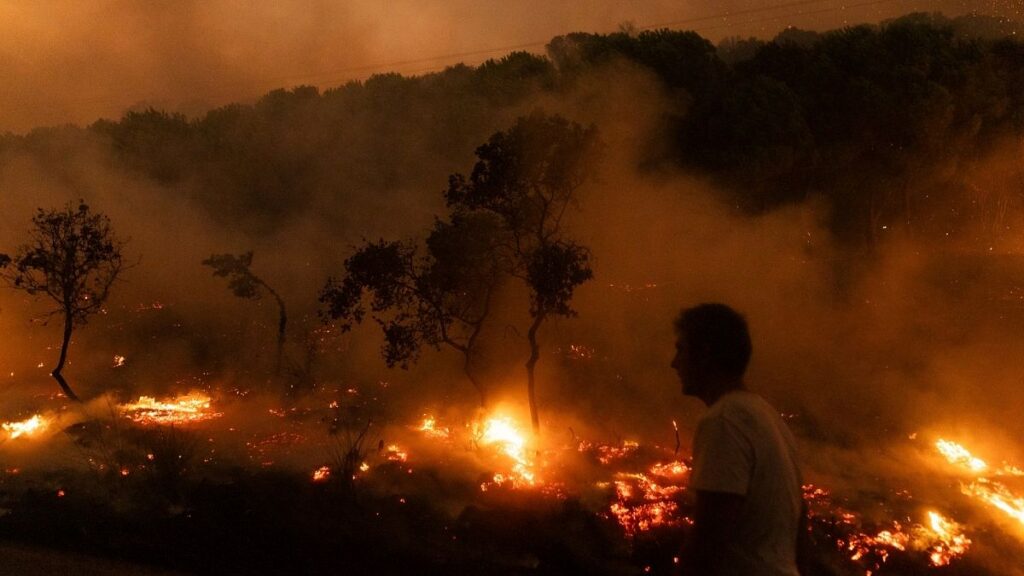Published on
A lack of updated map data is making the fight against wildfires in Europe inefficient, the European Court of Auditors (ECA) said in a report on Wednesday.
The report analyses how some member states use EU funds to prevent wildfires. While it acknowledges significant investments in prevention, the ECA notes that the data used are outdated and there is little monitoring of the actual impact of the spending.
The report reviewed projects funded since 2014 through the European Structural and Investment Funds and the Recovery and Resilience Facility (RRF) in Greece, Spain, Poland, and Portugal.
Auditors concluded that projects selected to receive EU funds do not always target areas where the impact will be the greatest.
For instance, it was found that in Greece the list of areas prone to forest fires is more than 45 years old, while a partially flooded area in Portugal was prioritised for forest fires because the hazard map was outdated and didn’t include a dam built several years earlier.
“On a positive note, more EU money is being spent on prevention of fires. However, the way EU-funded projects are selected means the money doesn’t always go where it could make the biggest difference. Little is known about the results of these funded projects, and, once the project ends, it’s unclear whether the activities will be continued,” Nikolaos Milionis, the ECA member responsible for the audit, said during a press conference.
In some Spanish regions, meanwhile, the budget was shared equally between all provinces, regardless of risks and needs.
The three countries, along with France, are traditionally among the worst-hit EU member states when it comes to wildfires.
Forest fires have intensified in recent years with an average of more than 5,200 square kilometres going up in flames yearly over the past four years across the 27-country bloc.
Member states have increasingly focused their effort on preventive measures. In Portugal, for instance, the percentage spent on prevention rose from 20% in 2017 to 61% in 2022, according to the ECA.
Auditors were however unable to tally up the precise amount of EU funds that were spent by member states on forest fires due in part to governments not being required to differentiate between different types of natural disasters when reporting to the European Commission on the amounts spent.
As such, the real impact of EU funds in tackling forest fires is unknown, auditors say.
They called on the EU executive to promote good practices for project selection including through the use of up-to-date risk maps, geographical coverage criterion and a risk-based criteria.
They also urged the Commission to make use of the information available at EU level through the European Forest Fire Information System (EFFIS), which tracks burnt areas and fires on a weekly basis across the bloc, among other data.
The platform shows for instance that more than 168,000 hectares have been reduced to cinders as of 10 June across the EU – nearly triple the amount burnt by that date on average over the 2006-2024 period – in some 911 fires, a number also up by 2.5 times.
The ECA’s report did not review funds provided through the response function or the EU Civil Protection Mechanism, which will be the subject of a future audit.
The Commission has for instance financed the acquisition of 12 amphibious firefighting planes, which are set to start coming online in 2027, and is also shouldering the cost of pre-positioning firefighters in high-risk areas.
Read the full article here


